12 Most Sustainable Vegan Leather Clothing Brands: The Conscious Consumer’s Guide
Affiliate Disclosure
Hey fellow impactful ninja ?
You may have noticed that Impactful Ninja is all about providing helpful information to make a positive impact on the world and society. And that we love to link back to where we found all the information for each of our posts.
Most of these links are informational-based for you to check out their primary sources with one click.
But some of these links are so-called "affiliate links" to products that we recommend.
Why do we add these product links?
First and foremost, because we believe that they add value to you. For example, when we wrote a post about the environmental impact of long showers, we came across an EPA recommendation to use WaterSense showerheads. So we linked to where you can find them. Or, for many of our posts, we also link to our favorite books on that topic so that you can get a much more holistic overview than one single blog post could provide.
And when there is an affiliate program for these products, we sign up for it. For example, as Amazon Associates, we earn from qualifying purchases.
What do these affiliate links mean for you?
First, and most importantly, we still only recommend products that we believe add value for you.
When you buy something through one of our affiliate links, we may earn a small commission - but at no additional costs to you.
And when you buy something through a link that is not an affiliate link, we won’t receive any commission but we’ll still be happy to have helped you.
What do these affiliate links mean for us?
When we find products that we believe add value to you and the seller has an affiliate program, we sign up for it.
When you buy something through one of our affiliate links, we may earn a small commission (at no extra costs to you).
And at this point in time, all money is reinvested in sharing the most helpful content with you. This includes all operating costs for running this site and the content creation itself.
What does this mean for me personally?
You may have noticed by the way Impactful Ninja is operated that money is not the driving factor behind it. It is a passion project of mine and I love to share helpful information with you to make a positive impact on the world and society. However, it's a project in that I invest a lot of time and also quite some money.
Eventually, my dream is to one day turn this passion project into my full-time job and provide even more helpful information. But that's still a long time to go.
Stay impactful,
Amid growing concerns about the textile industry’s environmental impact and cruelty toward animals, many clothing brands are moving away from fabrics like leather made with animal skin and into vegan leather alternatives. In recent years, however, the term “vegan leather” has been indistinguishably used for various versions of textile materials, with and without petroleum-derived content. In general, fashion greenwashing makes it harder for you and all other consumers to determine which brands offer the most eco-friendly vegan leather garments. So, we had to ask: Which are the most sustainable vegan leather clothing brands?
The most sustainable vegan leather clothing brands are Stella McCartney, VEERAH, and culthread, which cut down on the carbon footprint, minimize waste, and strive for circularity. In addition, PANGAIA and Womsh use low-impact, innovative materials and adhere to ethical practices.
Whether you are searching for a jacket, a skirt, or a pair of sneakers to add to your wardrobe without negatively impacting the soil, the water, the animals, and other people, there is a brand for you. So, let’s keep reading to learn more about the most sustainable vegan leather clothing brands and how they ensure sustainable, ethical practices.
Here’s How Sustainable Vegan Leather Fabrics Generally Are
Vegan leather fabrics are an alternative to animal-derived leather, and, therefore, avoid the resource-intensive farming stage and chemical-intensive manufacturing stage of the animal counterparts. There are many versions of vegan leather, with various ratios between bio-based and petroleum-based content. For example, AppleSkinTM , an increasingly commonly vegan leather used in footwear, has 30% to 50% of its content made with waste from the apple juice industry. The rest is made with polyurethane—a leather alternative that can be either water-based (bio-based) or petroleum-based. Other vegan leather alternatives are Piñatex, Mylo™, MIRUM®, VEGEA, and DESSERTO (cactus leather).
“Sustainable: The ability to be maintained at a certain rate or level | Avoidance of the depletion of natural resources in order to maintain an ecological balance”
Oxford Dictionary
To understand the sustainability of vegan leather, we’ve assessed the life-cycle and each stage’s sustainability. This life-cycle assessment (LCA) is a method to evaluate the environmental impacts of products and materials. Here’s the quick summary of our LCA of vegan leather!
What makes sustainable vegan leather: Vegan leather made (mostly) with plant-derived fibers and bio-based polymers, such as Piñatex, Mylo™, and MIRUM®, are considered sustainable. Specifically, Piñatex fabrics are among the most sustainable textile materials because 80% of raw materials for Piñatex fabrics come from pineapple leaves, an agricultural waste from the pineapple fruit industry, and the production process is a closed-loop mechanical process without synthetic chemicals.
Additionally: Using agricultural and industrial waste, such as pineapple leaves, apple pomace, and grape peels, is considered sustainable as it slows down the demand for land needed for waste storage and avoids carbon emissions due to the practice of burning agricultural waste.
Here’s How We Selected the Most Sustainable Vegan Leather Clothing Brands
The brands on this list were chosen based on their commitment and actions to promote sustainable practices while reducing the environmental impacts of the textile industry.
They are transparent about their materials, processes, and workforce management within their supply chain.
Some brands focus their efforts on reducing waste and optimizing natural resources while others strive to reduce the carbon footprint of their clothes.
All of these brands share the commitment to reshape the textile industry toward a more sustainable and Earth-friendly sector.
These Are the 12 Most Sustainable Vegan Leather Clothing Brands
Most Sustainable Vegan Leather Clothing Brands
Overall, these vegan leather clothing brands are sustainable. Yet, they take various approaches to reduce environmental impacts and uphold ethical standards. Let’s dive into each brand and find out more.
Stella McCartney: Luxurious Fashion Clothes Made Ethically and Sustainably
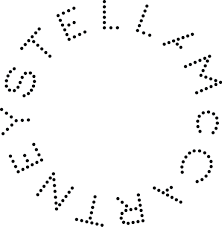
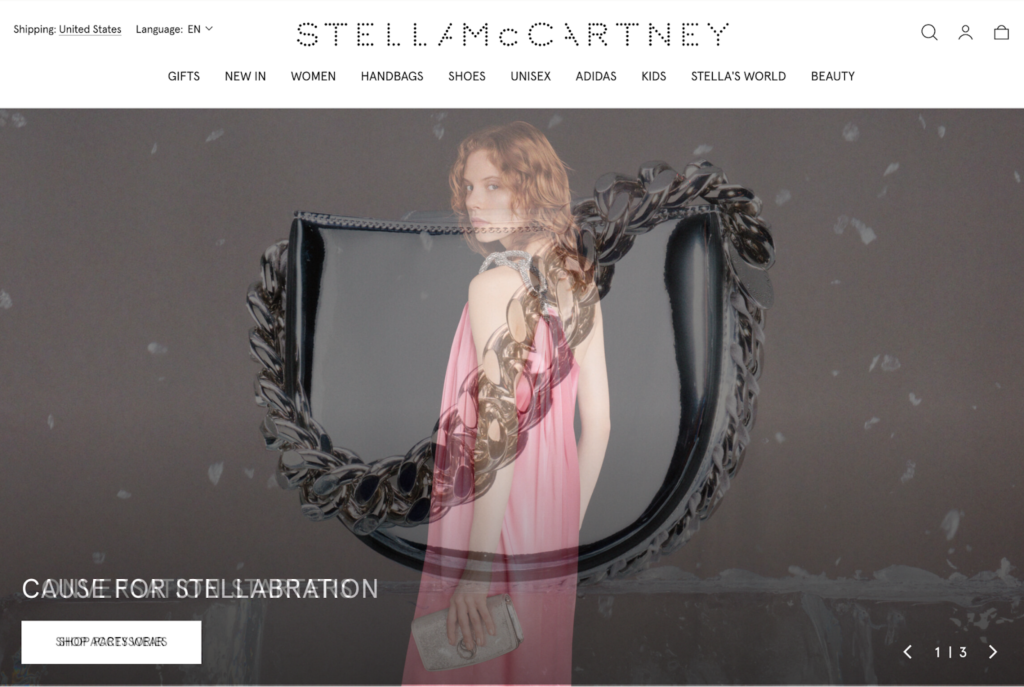
“We are committed to being an ethical, modern and honest company without compromising on luxury or quality.”
Stella McCartney
🌎
How do they ensure their sustainability?
Stella McCartney ensures sustainability by making use of the most cutting-edge and progressive materials that aim to reduce the impact on the planet and are always cruelty-free while following the principles of circularity. They use a medium proportion of eco-friendly and innovative materials, including GOTS-certified organic cotton, cashmere from 100% recycled waste Re.Verso™, and low-impact plant-based alternative materials (BananaTex®, VEGEA, Mylo™, MIRUM®). Specifically, they invested in the parent company that makes MIRUM®, an entirely plastic-, fossil fuel- and water-free alternative to animal leather. Also, their Frayme Mylo™ is the world’s first-ever luxury bag made with vegan leather crafted from mycelium, the root-like structures of fungi. Further down the life-cycle, Stella McCartney employs technological advances to trace their products, lower their manufacturing impact, and increase their circularity. Additionally, they exclusively use paper that is either FSC-certified or made from at least 50% recycled content in their packaging. In 2014, the brand launched Clevercare—a garment labeling system covering five simple areas of clothing care: washing, temperature, drying, ironing, and dry cleaning to help extend the life of garments, decrease the number of pieces that end up in landfill, and reduce life-cycle environmental footprint.
🌐
How do they ensure their ethics?
Stella McCartney commits to transparency across supply chains through diligent reporting, measuring, and tracking. Stella McCartney is a member of the Ethical Trading Initiative (ETI), a human rights organization driving force in ethical trade. They also trace most of their supply chain. Additionally, Stella McCartney uses lambswool and sheep wool certified with Responsible Wool Standard, appropriately addressing the welfare of sheep (and their calves) and the land they graze on.
🤝
Are they part of any giving-back programs?
Stella McCartney partners with and supports many charities, including but not limited to BioPlanet, Million Trees Miami, Naked Heart Foundation, Meat Free Monday, and Sea Shepherd.
🛍️
What is their product range?
- Best for: womenswear, menswear, kidswear
- Product range: shirts, skirts, denim, sweaters, swimwear, dresses, pants, jackets, blazers, hoodies, knitwear, tops, blouses, T-shirts, underwear, socks, shorts, jumpsuits, playsuits, shoes, accessories, plus-size
- Price range: $$$
VEERAH: Shoes and Accessories Made Ethically With Vegan Leather
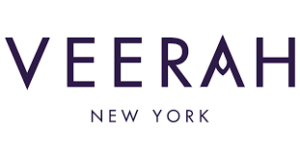
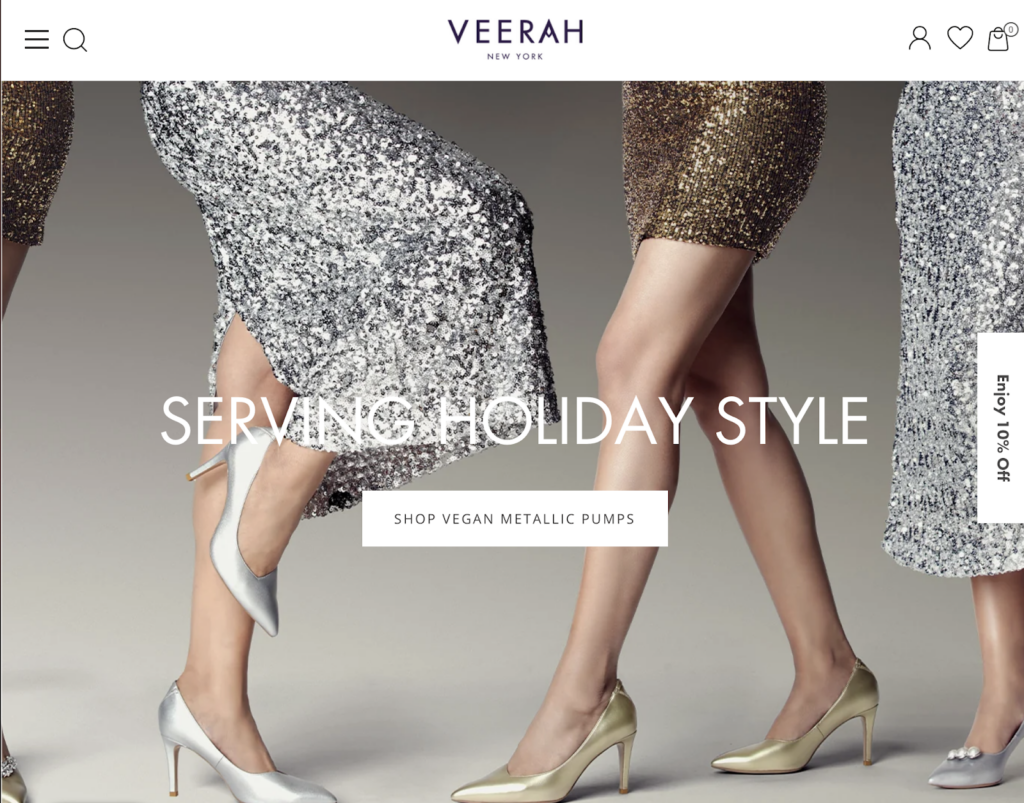
“With smart sourcing and thoughtful design behind each collection, all of our shoes are ethically made using only vegan, innovative materials – from apple leather to recycled plastic textile and more.”
VEERAH
🌎
How do they ensure their sustainability?
VEERAH’s sustainability efforts focus on sourcing low-impact, recycled, and recyclable materials, reducing waste, and making lasting shoes. For their shoes, VEERAH opts for vegan leather instead of animal leather to avoid the adverse environmental impacts associated with sourcing and processing animal hides. Instead of animal-derived leather, the brand uses vegan leather made with apple peel or bamboo, reducing their greenhouse gas emissions. For their packaging, VEERAH strives to have 100% recyclable packaging. Currently, 85% of their packaging materials are made from post-consumer materials, and 71% are recyclable. Their shoe boxes are made from 80% post-consumer chipboard, and all communication collaterals are printed on post-consumer paper. Regarding waste, VEERAH has reduction initiatives, including limited production runs and used shipping boxes that customers can select during the check-out process. Lastly, they handcraft their shoes to last for a long time, prioritizing quality over quantity.
🌐
How do they ensure their ethics?
VEERAH has a Code of Conduct that covers the ILO’s Four Fundamental Freedoms principles. They ensure most workers in the final production stage are paid a living wage and trace part of their supply chain, including all of the final production stage.
🤝
Are they part of any giving-back programs?
VEERAH pledges to give back to communities, supporting causes aligned with their values. Specifically, they donate at least 1% of their revenue to social impact causes. Additionally, their employees are offered ten paid hours per quarter for volunteering or taking self-improvement courses. For every 100 customer feedback surveys we receive, VEERAH sponsors a one-year scholarship for a “She’s the First” girl scholar.
🛍️
What is their product range?
- Best for: womenswear
- Product range: boots, flats, heels, sandals, accessories
- Price range: $$$
- Size range: XS–XXL
culthread: Stylish and Comfortable Jackets From Vegan and Deadstock Materials

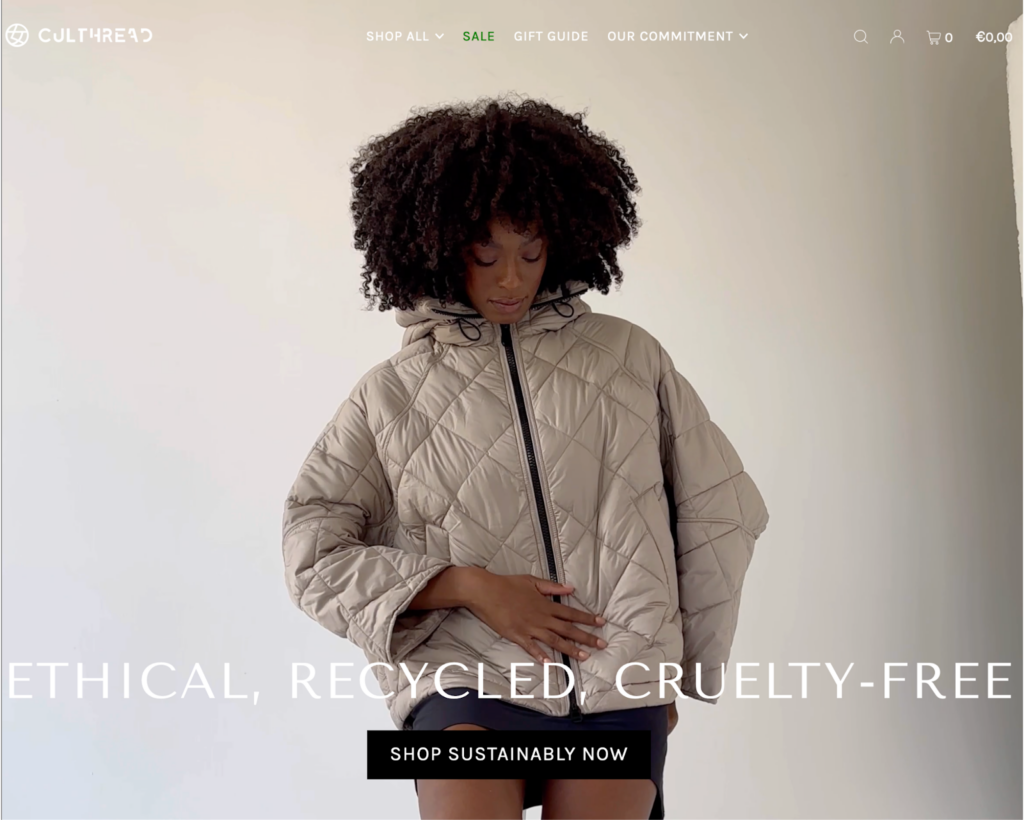
“I could not find a quality coat that aligned with my values, while also being stylish, practical and comfortable – despite working in the outerwear business for 15 years. I wanted a multi-pocket, hooded, 100% vegan, sustainable, lightweight, warm jacket. So I made my own.”
Rina, Founder of culthread
🌎
How do they ensure their sustainability?
culthread ensures sustainability by using a high proportion of low-impact textile and packaging materials, minimizing waste, and implementing incentives to reduce transport carbon footprint. At culthread, over 95% of jacket materials are vegan, recycled or rescued. Specifically, they source Piñatex, 100% bio-based vegan leather, and recycled vegan leather made from coffee and bottle waste with water-based polyurethane (PU) coatings. Additionally, the polyester used for jacket fabrics, insulation, padding, and threads is 100% recycled with certifications from the Global Recycle Standard and OEKO-TEX® STANDARD 100. Regarding packaging, all their products come in a reusable “Destroy the Patriarchy not the Planet” laundry bag, made fully from production offcuts and deadstock. Beyond that, their mailer bags are biodegradable, recyclable, and plastic-free. The tape is also fully biodegradable and 100% plastic-free self-adhesive paper packing tape. Furthermore, culthread minimizes waste by limiting production runs, optimizing fabric cutting using laser technology, and reusing old leftover old material for new designs. Regarding transport carbon footprint reduction, the brand implements technology to reduce the back and forth of sample products at the design stage and sourcing materials near where their factory is located. Lastly, they provide tips for customers to stay sustainable post-purchase by extending the lifespan of a product through caring, repairing, and donating.
🌐
How do they ensure their ethics?
culthread ensures their ethics by being transparent about their supply chain, including who their suppliers are and which certifications they hold. They have 100% traceability on our Tier 1 & 2 suppliers and visit their suppliers regularly. Their partner suppliers are third-party audited. Their Supplier Code of Conduct covers ILO’s Four Fundamental Freedoms principles. Also, they pay tailors in the Vietnam-based factory aligned and above the Asia Living Wage and the Global Living Wage.
🤝
Are they part of any giving-back programs?
culthread supports various organizations, including Dress for Success Greater London, Crisis, Collective Aid, and Broken Shovels Farm Sanctuary.
🛍️
What is their product range?
- Best for: womenswear
- Product range: jackets, accessories
- Price range: $$
- Size range: XS–L
PANGAIA: Comfort-Focused Clothing Made Sustainably With Innovative Textiles
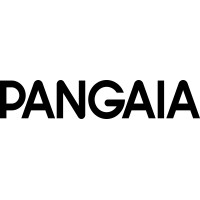
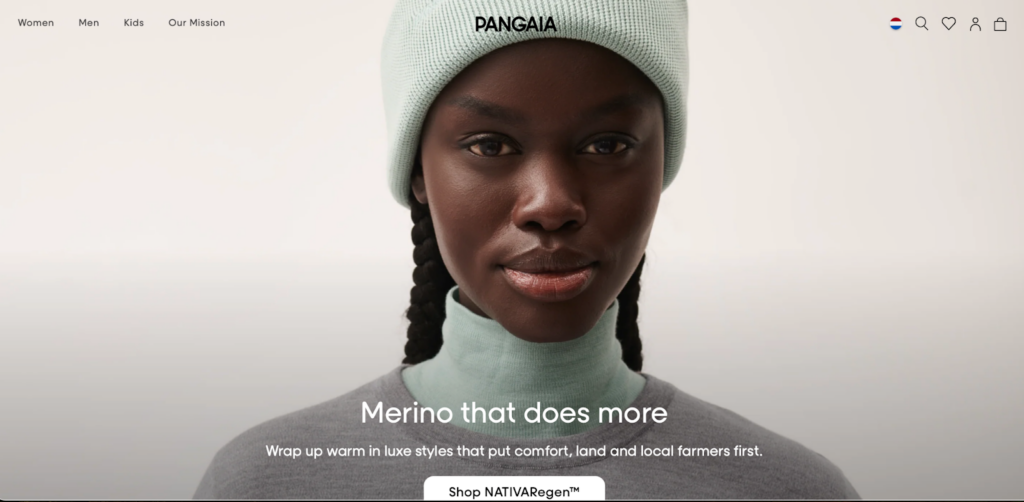
“ Every product we create is born from science and purpose, each solving an environmental problem of the industry. ”
PANGAIA
🌎
How do they ensure their sustainability?
PANGAIA ensures sustainability by diversifying materials options and shifting toward circular systems in which they regenerate nature, design out waste and pollution, and keep products and materials in use. Regarding sourcing materials, they opt for low-impact materials from nature and introduce new and lower-impact alternatives when possible, for example, by replacing animal leather with vegan leather. PANGAIA established their Preferred Material List (PML), which is diligently assessed based on a variety of criteria, including end-of-life pathways, visibility of the supply chain and raw material inputs, LCA results, certifications, chemical and water intensity, recycled and diverted waste streams, geographical provenance, end-use of the material, and performance against conventional alternatives. In 2022, 29% of PANGAIA’s collections were made with the top two most sustainable materials on this list, which includes natural fabrics made fully with organic cotton, regenerative cotton, organic linen, organic hemp, organic kapok, regenerative cashmere, and recycled cashmere. They also make use of innovative materials to replace high-impact traditional fabrics, for example, plant-based, ethically-sourced FLWRDWN™ to replace goose and duck down, FRUTFIBER™ to replace conventional cotton, or bio-based material MIRUM® and VEGEA to replace animal and synthetic leather. Further down the life-cycle in the manufacturing stage, PANGAIA applies innovative treatments to reduce waste and water use. These include AIR INK®, miDori® bioWick, and the bioengineered dye technology COLORFIX.
🌐
How do they ensure their ethics?
PANGAIA binds suppliers in a Code of Conduct that covers all of the ILO’s Four Fundamental Freedoms principles. They also make statements regarding Diversity and Inclusion, Modern Slavery, Child Labour & Young Workers Policy, and Human Rights Policy. They trace most of their supply chain, including all of the final stages of production. In 2022, they extended their transparency by mapping and publishing their Tier 1 subcontractors and Tier 2 suppliers while having 95% of their suppliers audited by a third party.
🤝
Are they part of any giving-back programs?
PANGAIA has been part of various philanthropic programs since their inception. They plant a mangrove tree for every product sold. PANGAIA is a member of 1% for the Planet, meaning that with every product you buy from PANGAIA, a sum is going to support the planet in one way or another. For example, through their partnership with Milkywire, PANGAIA launched two grassroots funds, Tomorrow Tree and Bee the Change, working collaboratively with communities in various conservation initiatives. They also partner with Coral Gardeners, an organization dedicated to saving our oceans’ coral reefs, which are in rapid decline. Additionally, they provide financial and in-kind support for humanitarian causes such as support for refugees and displaced people, racial justice and LGBTQIA+ rights, frontline workers, and young people.
🛍️
What is their product range?
- Best for: womenswear, menswear, kidswear
- Product range: hoodies, knitwear, outerwear, sweatshirts, tops, T-shirts, pants, denim, shorts, activewear, gloves, hats, socks, accessories
- Price range: $$$$
- Size range: XS–XL
Womsh: Sneakers Designed and Manufactured Entirely in Italy
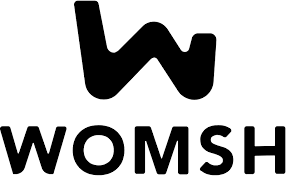
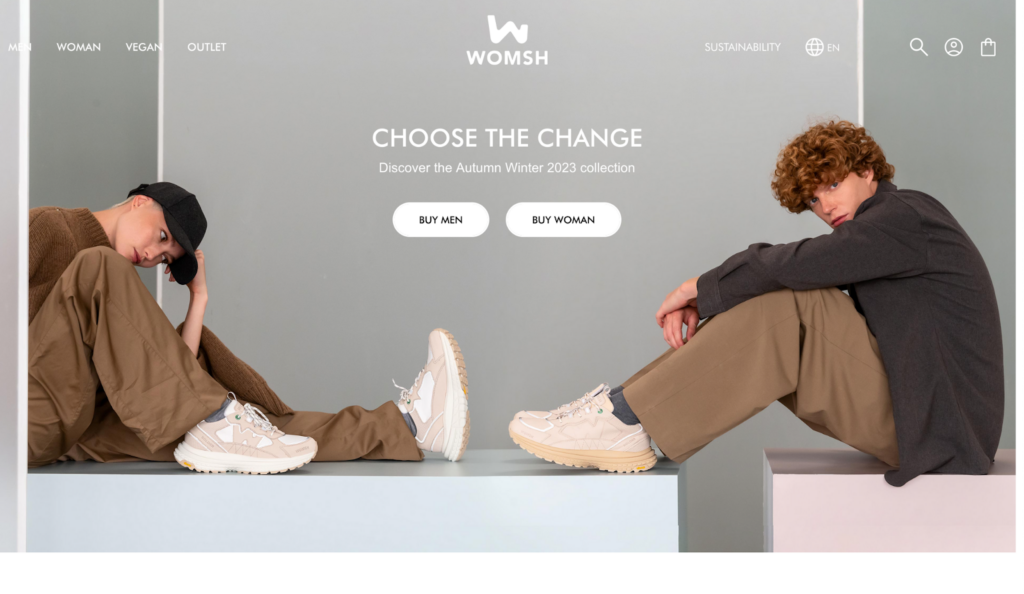
“Womsh (Word Of Mouth Shoes): starting with our name, with each word, we want to promote a more conscious and environmentally friendly purchasing philosophy. We would like to create a tribe of people who think, choose and start to change the world with their small yet effective everyday gestures.”
Womsh
🌎
How do they ensure their sustainability?
Womsh prioritizes sustainability by sourcing a medium proportion of eco-friendly textile and packaging materials, opting for low-impact production, and implementing incentives to reduce their carbon footprint. Firstly, they lower their environmental impacts by using 100% recycled cardboard for packaging and transitioning into using vegan leather AppleSkinTM (50% apple fiber and 50% polyurethane) in the sneakers. Secondly, they opt for a metal-free tanning process for the leather used in the uppers of some shoe models and for the lining of the entire collection, guaranteeing safety for people’s health and for the environment. Lastly, their carbon footprint reduction incentives include relying on clean and renewable sources for 90% of the energy needed in the main manufacturing factory, keeping sourcing and manufacturing locally within Italy to avoid long-distance transportation and its associated carbon emission, and offsetting carbon emissions with the project Zero Impact under their partnership with LifeGate.
🌐
How do they ensure their ethics?
Womsh traces most of their supply chain and ensures payment of a living wage for some suppliers. The workers who produce their shoes are paid according to European standards and provided with a safe and healthy working environment.
🤝
Are they part of any giving-back programs?
Womsh participates in recycling projects where their sneakers are collected and taken apart so that the upper parts can be turned into granular material. Such materials are used in children’s playgrounds as anti-shock flooring.
🛍️
What is their product range?
- Best for: menswear, womenswear
- Product range: sneakers
- Price range: $$$
- Size range: XS–XL
Sylven New York: Plant-Based and Vegan Luxury Footwear

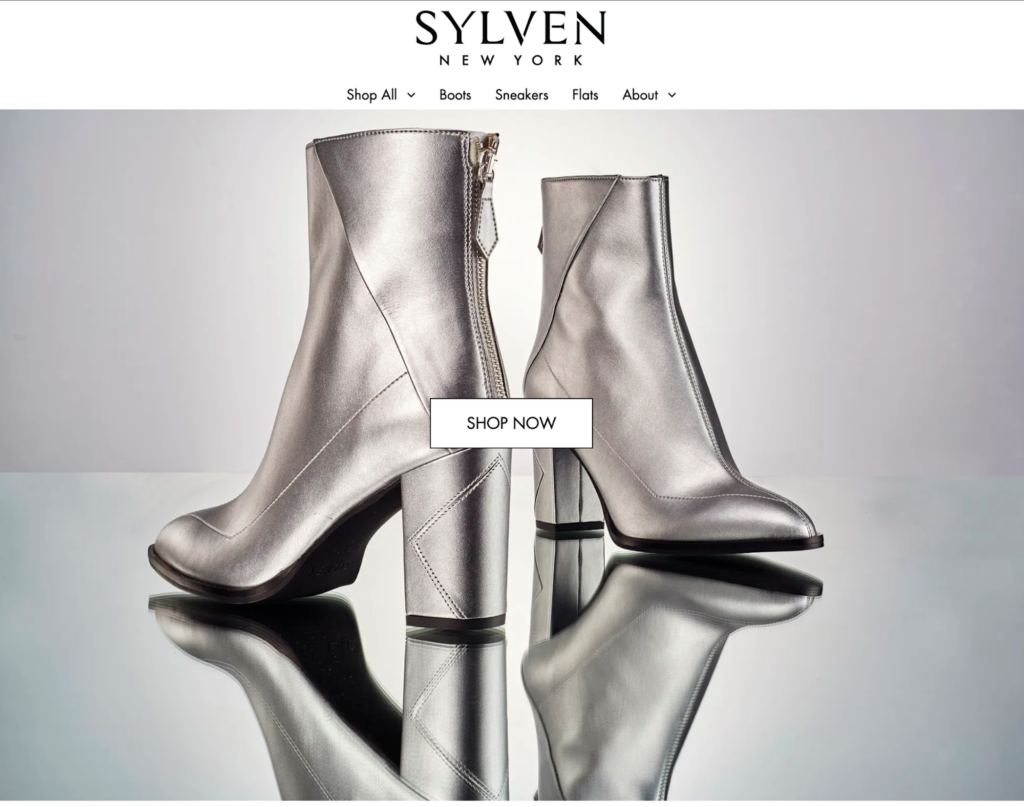
“Intentionally designed with reverence for our planet and all its inhabitants.”
Sylven New York
🌎
How do they ensure their sustainability?
Sylven New York promotes sustainability by innovating with shoe materials to reduce the sourcing environmental impacts, recycling most of their process’s unusable parts, and keeping sourcing and manufacturing at close distances within Italy to reduce the transportation carbon footprint. Firstly, they prioritize plant-based, bio-based, renewable, recycled, and organic vegan materials and components. Specifically, they use AppleSkinTM—a bio-based vegan leather—instead of animal skin for the shoe’s upper while sourcing coconut husk for insoles and wheat and barley byproducts for the lining. Additionally, Sylven New York uses various recycled materials, such as Vegan Nappa, recycled soles from closed-loop recycled rubber, recycled heels from closed-loop recycled plastic, and recycled shoe lasts. Regarding packaging, their shoes are shipped with recycled paper, reclaimed cotton dust bags, and recycled and recyclable shoe boxes. They also employ a plastic-free packaging mandate with all of their factory partners. Secondly, beyond using recycled materials, the brand also gives the unusable parts of their products another life via their partnership with TerraCycle. Lastly, they source materials and produce shoes within Italy, keeping the transportation distances relatively short and the associated carbon emissions relatively low.
🌐
How do they ensure their ethics?
Sylven New York partners with factories based in Italy, a medium-risk country for labor abuse. They visit each of their facilities.
🤝
Are they part of any giving-back programs?
Sylven New York is not known to be part of any giving-back programs.
🛍️
What is their product range?
- Best for: womenswear
- Product range: boots, sneakers, flats
- Price range: $$$
- Size range: XS–XL
Angels Ambition: Multifunctional, Timeless, High-Quality Vegan Clothing
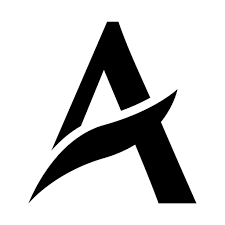
“The label is based on the basic idea of combining multifunctionality with current fashion trends and still producing timeless and high-quality clothing.”
Angels Ambition (translated from German)
🌎
How do they ensure their sustainability?
Angels Ambition ensures sustainability by relying on durable, biodegradable, and pollutant-free textiles that can be used in multifunctional clothing. They use a medium proportion of eco-friendly materials, including GOTS-certified organic cotton. Angels Ambition primarily sources materials made in Germany, then manufactures their clothes in the region, shortening the delivery routes and the associated transport carbon emissions. Additionally, they minimize waste by reusing some of their textile offcuts while avoiding plastic waste whenever possible. Their clothes are wrapped in multifunctional, reusable cotton bags and packed in recycled cardboard boxes from local retailers. Finally, Angels Ambition uses climate-neutral shipping.
🌐
How do they ensure their ethics?
Angels Ambition holds their final production stage in Germany, a low-risk country for labor abuse. They trace most of their supply chain. Regarding animal welfare, they avoid animal cruelty practices by making their entire product range vegan. For example, with products traditionally made with animal-derived leather, such as biker jackets, they opt for Piñatex vegan leather instead.
🤝
Are they part of any giving-back programs?
Angels Ambition is not known to be part of any giving-back programs.
🛍️
What is their product range?
- Best for: womenswear
- Product range: tops, bottoms, dresses, blouses, jackets
- Size range: S–XXL
MoEa: Bio-Sneakers Made From Fruits and Plants
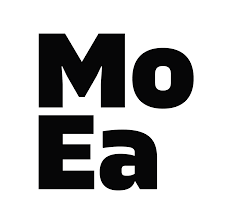
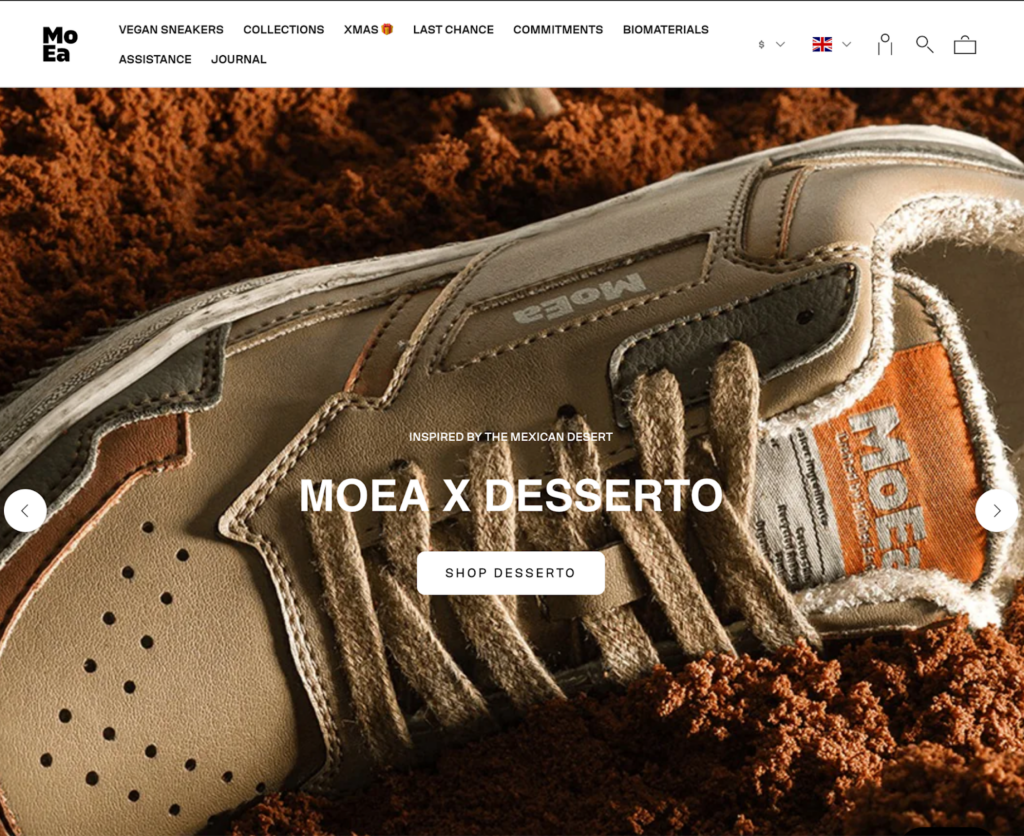
“We’ve launched MoEa to create sneakers that offer the same level of style and comfort you’d expect to see in your favourite leather pair, whilst ensuring that the planet isn’t some sort of a meaningless afterthought and that animals aren’t treated with cruelty.”
MoEa
🌎
How do they ensure their sustainability?
MoEa ensures sustainability by replacing leather with biomaterials to stay cruelty-free while reducing their carbon footprint. The biomaterials of their choice are made with agricultural waste and a stabilizer of either cotton or recycled/bio-based polyurethane. MoEa uses a range of these bio-based vegan leathers, including Piñatex, AppleSkinTM, CactusSkin, CornSkin, and GrapeSkin. Beyond shoe uppers, the brand sources recycled materials for other parts, for example, 70% recycled bamboo for the lining and 40% recycled rubber for the soles. Additionally, they calculate and disclose the life-cycle carbon footprint of each type of biomaterial used in their sneakers. Their life-cycle assessment, made by certified agency Sami, shows that a MoEa sneaker emits on average 5kg CO2 eq. In comparison, the estimated carbon impact of a pair of bovine leather shoes is over 60 kg CO2 eq.
🌐
How do they ensure their ethics?
MoEa ensures their ethics by using traceable materials and holding the last stage of production in Portugal, a low/medium risk country for labor abuse. They also visit their suppliers. Regarding animal welfare, they avoid animal cruelty practices by making their entire product range vegan, certified by PETA.
🤝
Are they part of any giving-back programs?
MoEa is a member of 1% for the Planet, donating one percent of their sales to environmental causes. They also help protect forests with WWF France.
🛍️
What is their product range?
- Best for: unisex
- Product range: sneakers, socks
- Size range: XXS–XXL
Good Guys: Vegan and Cruelty-Free Shoes Made In Europe
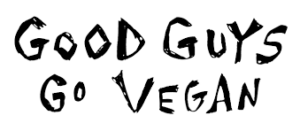
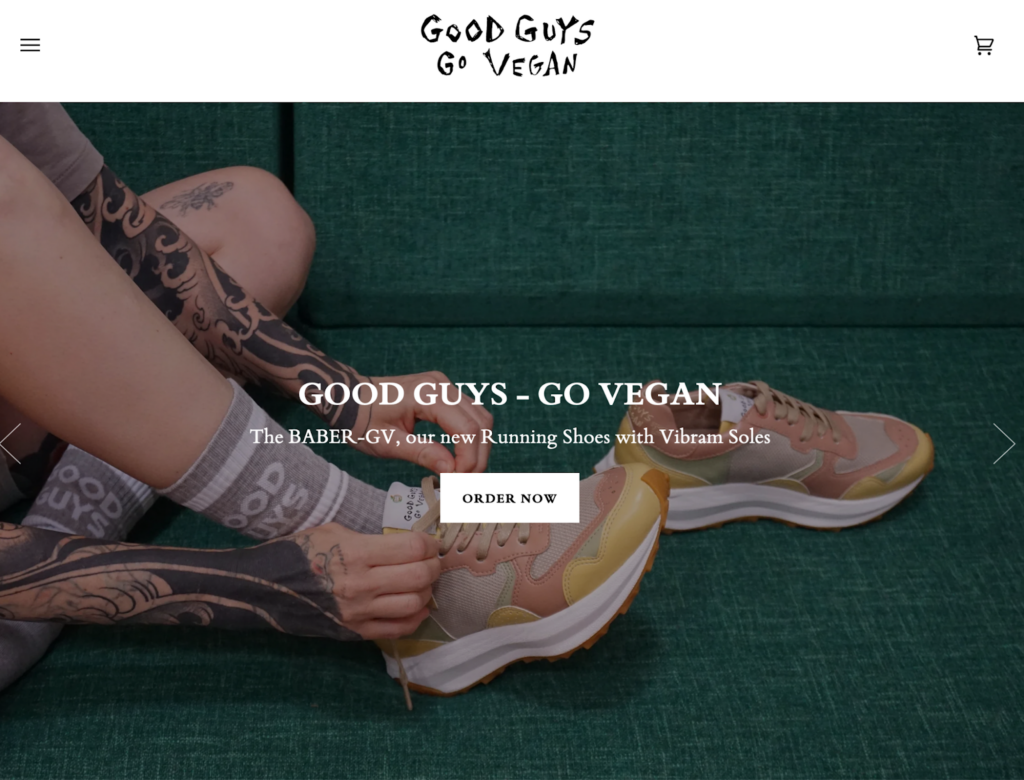
“We carefully choose our collaborators and make sure all our productions are made in a fair-trade environment and are 100% Vegan, from the glue to all the components we use for our shoes.”
Good Guys
🌎
How do they ensure their sustainability?
Good Guys prioritizes sustainability by replacing high-impact animal-derived materials with vegan alternatives. They opt for AppleSkinTM and REACH-certified PU-based microfibers instead of leather and suede for the shoe upper, avoiding the chemicals and the cruelty associated with sourcing and processing animal products. For the lining of their shoes, Good Guys uses bio-based, recycled, recyclable microfiber approved by OEKO-TEX® STANDARD 100. Additionally, they source natural materials for soles and glue elements. Additionally, they keep sourcing and manufacturing within relatively close distances (within the regions of Italy, Spain, and Portugal), lowering their transport carbon footprint. Lastly, they strive to extend the lifespan of their shoes with a care guide and an incentive to recycle pre-loved Good Guys products.
🌐
How do they ensure their ethics?
Good Guys is transparent about the final production stage of their products, sharing their Europe-based manufacturing partners and the specific footwear made in each facility. Manufacturing in the European Union, a low/medium risk region for labor abuse, makes it easier to guarantee a fair-trade environment. Good Guys also visits their suppliers. Regarding animal welfare, they avoid animal cruelty practices by making their entire product range vegan.
🤝
Are they part of any giving-back programs?
Good Guys is not known to be part of any giving-back programs.
🛍️
What is their product range?
- Best for: womenswear, menswear
- Product range: sneakers, boots, clogs, sandals, socks
- Price range: $$$
- Size range: XS–XXL
Will’s Vegan Store: Vegan Shoes, Clothes, and Accessories From a Climate-Neutral Business

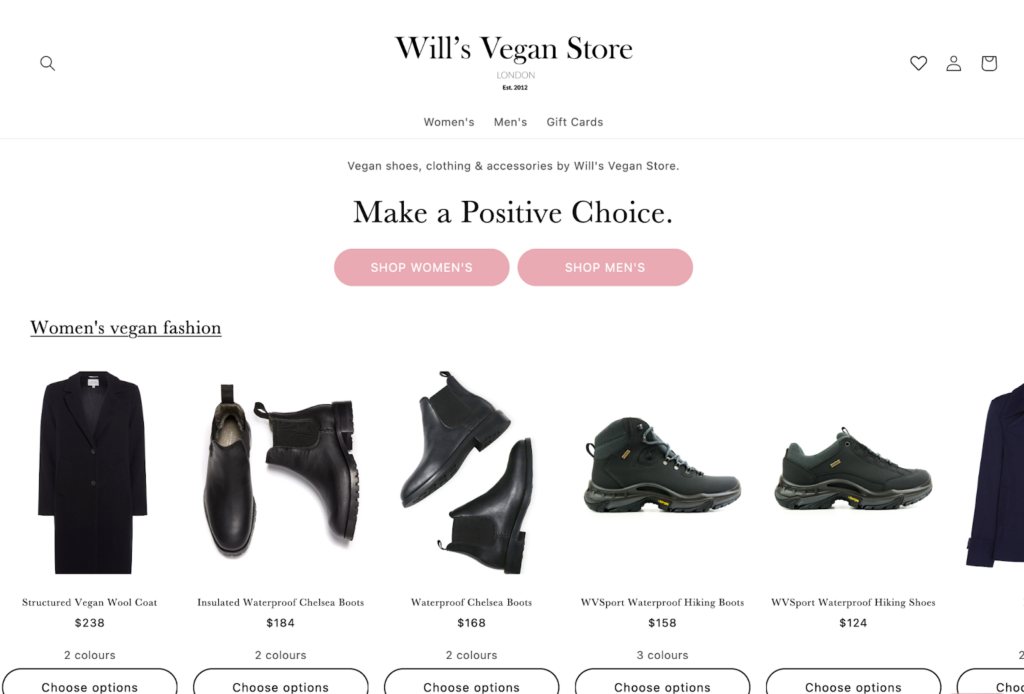
“We use sustainable materials as much as possible.”
Will’s Vegan Store
🌎
How do they ensure their sustainability?
Will’s Vegan Store promotes sustainability by using low-impact natural fabrics or recycled materials whenever possible. In 2020, they introduced their carbon-neutral LDN Biodegradable Sneakers made with lyocell, organic cotton, and natural latex insoles. Additionally, they are transitioning into bio-based vegan leather, replacing plastic-based materials and eliminating animal-derived leather. The latest vegan leather version they source contains 69% natural oil and 31% polyurethane (PU) with backing fabric made with eucalyptus-based viscose. Where they can’t find a suitable natural material, they source recycled materials instead of high-impact virgin versions, including recycled polyester and recycled nylon. Furthermore, Will’s Vegan Store operates a plastic-free supply chain where all deliveries use exclusively paper shipping bags, cardboard boxes, and paper tape. Lastly, they offset 100% of their carbon emissions in environmental projects, for example, to avoid deforestation in Papua New Guinea and Columbia.
🌐
How do they ensure their ethics?
Will’s Vegan Store partly traces their supply chain. Regarding animal welfare, they avoid animal cruelty practices by making their entire product range vegan.
🤝
Are they part of any giving-back programs?
Will’s Vegan Store is not known to be part of any giving-back programs.
🛍️
What is their product range?
- Best for: womenswear, menswear
- Product range: coats, jackets, knitwear, shoes, sneakers, boots, pumps, heels, skirts, dresses, accessories
- Price range: $$
- Size range: XS–XXL
NAE Vegan Shoes: Shoes Made Sustainably With “No Animal Exploitation” (NAE)
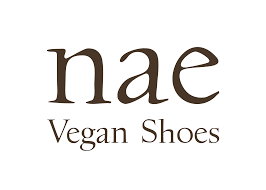
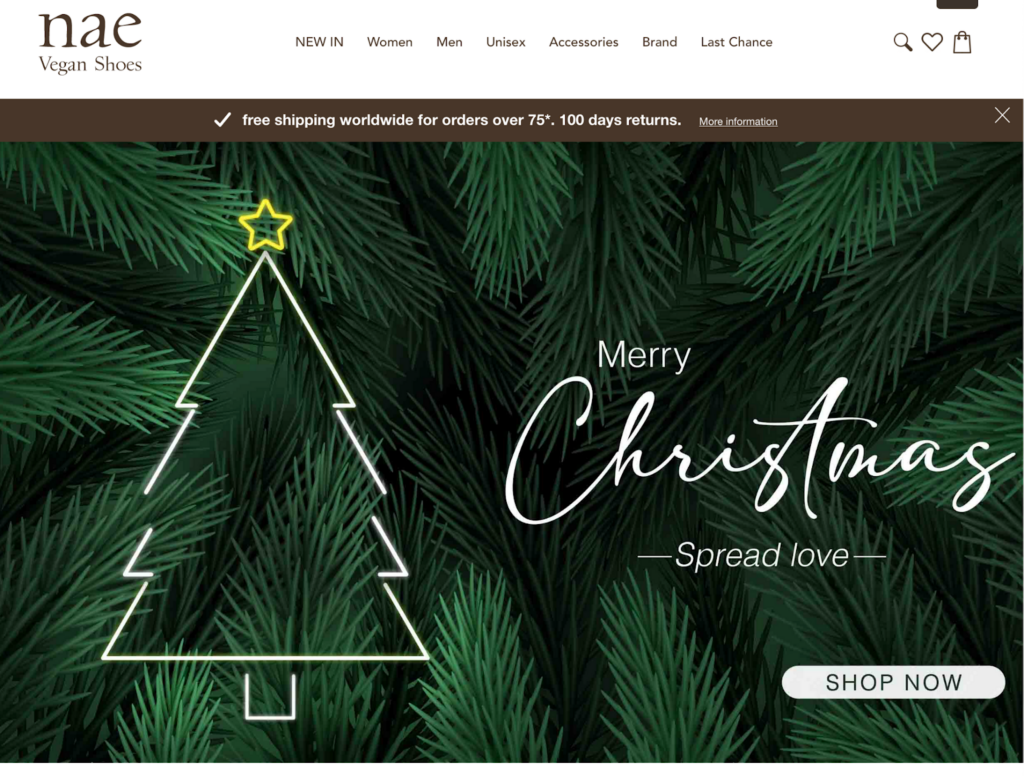
“We carefully select the best material options that meet our environmental ideals, without compromising the quality and durability of our vegan shoes.”
NAE Vegan Shoes
🌎
How do they ensure their sustainability?
NAE Vegan Shoes ensures sustainability by sourcing durable materials according to environmental parameters such as resources and waste, energy usage and carbon emissions, chemical use, and pollution. Consequently, they don’t use animal leather, but rather Piñatex and AppleSkinTM vegan leather alternatives, for their shoes. NAE Vegan Shoes also sources low-impact materials like organic cotton, cork, and recycled polyester for their footwear products. Additionally, every element of their packaging is 100% recyclable. NAE Vegan Shoes also uses recycled cardboard boxes, recycled kraft wrapping paper, and eco-friendly tape made from kraft paper and natural rubber adhesive.
🌐
How do they ensure their ethics?
NAE Vegan Shoes traces most of their supply chain. Their final production stage is undertaken in Spain and Portugal, medium-risk countries for labor abuse. Regarding animal welfare, they avoid animal cruelty practices by making their entire product range vegan.
🤝
Are they part of any giving-back programs?
NAE Vegan Shoes is not known to be part of any giving-back programs.
🛍️
What is their product range?
- Best for: menswear, womenswear
- Product range: boots, sneakers, flat shoes, heels, sandals, accessories
- Price range: $$$
- Size range: XS–XXL
BEEN London: Timeless Accessories From Recycled Leather Offcuts and Plastic Bottles
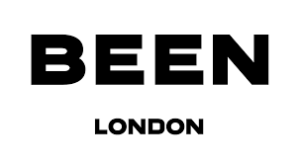

“We make versatile, timeless accessories from discarded materials that would otherwise go to landfill. In doing so, we are shifting the narrative around waste, showing what is possible with new innovations, and doing our part to protect nature.”
BEEN London
🌎
How do they ensure their sustainability?
BEEN London’s sustainability efforts focus on circularity. They start with reverting waste away from landfills and into making clothing accessories. BEEN London also uses a high proportion of low-impact materials, including GRS-certified recycled materials from post-consumer plastic bottles, fishing nets, plant-derived waste, used textiles, and leather offcuts and trimmings. Specifically, they source recycled leather, recycled nylon, recycled polyester, recycled cotton, and recycled fell. Additionally, they have some bags made with vegan leather alternatives, including Piñatex and AppleSkinTM, made with agricultural and industry waste. Beyond sourcing, BEEN London also considers circularity in every decision. Specifically, they strive to limit the amount of waste we create through our design process, such as opting for making mostly rectangular bags with which they can achieve near zero offcuts. Any offcuts that are created in the production process are being collected and recycled. Furthermore, they design durable, versatile, seasonless, timeless pieces that consumers will still want to wear year after year. BEEN London helps extend product lifespan by offering repairs and incentivizing end-of-life recirculating. The design of their bags also covers end-of-life recycling, meaning that they preempt the dismantling challenges by stitching the lining to bags and using water-soluble glues or leaving their bags unlined. When reuse and repair are no longer an option, customers can send their bags back to BEEN London, where they will be dismantled for material recycling. Lastly, BEEN London strives to reduce their climate impact by opting for sea freight and offering zero-emission London delivery.
🌐
How do they ensure their ethics?
BEEN London makes everything locally in East London to ensure the highest level of transparency. They trace all of their supply chain and visit their suppliers regularly.
🤝
Are they part of any giving-back programs?
BEEN London gives back by planting trees in the Amazon Rainforests. They plant a tree for every leather item in the color Rainforest Green ordered and sold. The impact of their reforestation efforts is tracked via Forest of BEEN London on their partner platform, Tree-Nation. Additionally, BEEN London supports Smart Works, a charity that gives women the confidence they need to reach their full potential by incentivizing customers to bring or post (pre-paid) their pre-loved bags from any brand for recirculating.
🛍️
What is their product range?
- Best for: womenswear
- Product range: backpacks, handbags, satchels, totes, wallets, purses
- Price range: $$$
- Size range: n/a
Vegan Leather Fabrics: Cruelty-Free Long-Lasting Materials
Vegan leather is a textile alternative to leather derived from animal skin. Bio-based vegan leather is considered more ethical and eco-friendly than animal-derived leather while avoiding the adverse environmental impacts of plastic-based vegan leather, such as releasing microplastics and not degrading in landfills.
Here are the life-cycle stages of vegan leather fabrics and each stage’s sustainability assessment:
- Sourcing of vegan leather fabrics: Using agricultural waste, such as apple pomace, pineapple leaves, and grape peels, to make vegan leather is sustainable. Using these agricultural byproducts requires no extra environmental resources (like water or land) and avoids carbon emissions associated with waste disposal. Alternatively, sourcing petroleum-based polyurethane (PU) for vegan leather is unsustainable because petroleum is a nonrenewable resource that requires a lot of energy to extract and refine, exacerbating the climate crisis and polluting the environment.
- Manufacturing of vegan leather fabrics: Manufacturing vegan leather from polyurethane fabrics is unsustainable because it is energy-intensive and high-polluting. Alternatively, manufacturing a bio-based vegan leather, such as Piñatex, can be done mechanically without toxic chemicals and, therefore, more sustainable.
- Transportation of vegan leather fabrics: Transporting can be a carbon-intensive stage in the life-cycle of clothing items made with vegan leather fabrics due to the distances covered and emissions associated with transporting vehicles. Vegan leather fabrics typically travel from fields and/or fossil fuel mines to processing and finishing factories, sorting centers, shops, and consumers’ homes before going to recycling centers or landfills.
- Usage of vegan leather fabrics: The usage of vegan leather made with petroleum-based polyurethane is generally considered unsustainable. Washing polyurethane clothes and accessories during the usage phase contributes to the increasingly serious problem of microplastic presence in marine environments. Using bio-based vegan materials is relatively more sustainable because it avoids releasing microplastics.
- End-of-life of recycled cotton fabrics: The end-of-life stage for the typical fossil-based polyurethane fabrics is not sustainable because they are not biodegradable. On the other hand, the biodegradability of bio-based vegan leather varies depending on the percentage of the bio content in the composition.
Piñatex, a bio-based vegan leather, is considered one of the most sustainable fabrics, thanks to the environmental benefits of sourcing agricultural waste as raw materials and a closed-loop mechanical process without synthetic chemicals. Similarly, bio-based vegan leather fabrics, such as Mylo™, MIRUM®, and some varieties of AppleSkinTM are eco-friendly.
Why Is It Important to Buy Products Made of More Sustainable Fabrics
It is important to buy products made of more sustainable fabrics because a sustainable textile industry has a lower carbon footprint, helps save natural resources, and is better for forests, animals, and humans.
Buying Sustainable Fabrics Reduces Your Carbon Footprint
The production of clothing and footwear is estimated to contribute 10% of global greenhouse gas emissions—more than all international flights and shipping combined. If the fashion industry were a country, it would be the fourth largest emitter of carbon dioxide.
One way to reduce the carbon footprint of the clothes you buy is to opt for sustainable fabrics. Sustainable fabrics, which are often made with natural or recycled fibers, have relatively low carbon footprints compared to petroleum-based fabrics. For example, organic cotton made in the US has a carbon footprint of 2.35 kg CO2 (per ton of spun fiber)—a quarter of polyester’s carbon footprint.
Buying Sustainable Fabrics Reduces Demand For Natural Resources and Waste Management
The textile industry uses water and land to grow vegan leather and other fibers. It is estimated that 79 billion cubic meters of water were used for the sector worldwide in 2015. For example, producing a single cotton t-shirt requires as much water as one person drinks for 2.5 years (2,700 liters of fresh water).
Worse yet, the textile economy is vastly more linear than circular: the largest amount of resources used in clothes ended up in landfills (instead of being recycled to remake clothes). According to a report by the Ellen MacArthur Foundation,
- Less than 3% of materials used in the textile economy in 2015 came from recycled sources.
- In other words, more than 97% of resources used in making clothes are newly extracted.
When clothing items are disposed of within a short period of time—under a year in the case of half of the fast fashion clothes—the natural systems that provide raw materials for fabrics don’t have enough time to recover and regenerate, which could lead to ecological breakdown.
Sustainable fabrics are made with less water and emissions while lasting longer:
- Because they are durable, you don’t need to buy new clothes too often.
- Thus, you help reduce the pressure to extract more resources for making new items.
Similarly, making and consuming sustainable fabrics made with recycled materials reduces the demand for virgin materials while helping tackle waste management.
Buying Sustainable Fabrics Encourages Sustainable Management of Forests
Sustainable plant-based fabrics are made with raw materials from forests and plantations that are sustainably managed, such as complying with FSC standards.
When you buy sustainable plant-based fabrics, you discourage unsustainable forestry practices like illegal logging. You also help reduce deforestation, biodiversity loss, and the effects of climate change.
Buying Sustainable Fabrics Encourages Fairer Treatment of Animals
The fashion industry is rife with animal mistreatment when it comes to making animal-based fabrics like vegan leather or vegan leather. Every year, billions of animals suffer and die for clothing and accessories.
Buying sustainable vegan alternatives can help to reduce the pressure on raising more and more animals to meet the demand for animal-based fabrics while sacrificing their well-being and lives.
Suppose you have to buy fabrics made with, for example, vegan leather or vegan leather; make sure you only choose brands committed to cruelty-free products. In that case, you help advocate better treatments for animals raised within the textile industry.
Using Sustainable Fabrics Encourages Fairer Treatment of Textile Workers
Recent statistics from UNICEF estimated as many as 170 million child laborers worldwide, many of whom were engaged in some form of work in the textile industry. They don’t get paid minimum wages and often work long hours.
When you buy sustainable fabrics from brands transparent about the working conditions at their factories, you discourage the use of child labor and help promote better working conditions for textile workers.
How Can You Generally Buy More Sustainable Fabrics
The key to sustainably buying fabrics is to check on relevant environmental and original certifications.
For natural fabrics:
- Global Organic Textile Standard (GOTS): A globally-recognized certification system that ensures a certain threshold of organic content has been met. It covers manufacturing, packaging, labeling, transportation, and distribution (but not what happens in the fields where crops are grown).
- USDA Certified Biobased Product: The USDA BioPreferred® Certification is a voluntary certification offered by the United States Department of Agriculture. The certification identifies products made from plants or other renewable materials.
- Ecolabel: Ecolabel is the official European Union voluntary label recognized worldwide for certified products with a guaranteed, independently-verified low environmental impact. The label requires high environmental standards throughout the entire life-cycle: from raw material extraction through production and distribution to disposal. It also encourages companies to develop innovative, durable, easy-to-repair, and recyclable products.
For plant-based semi-natural/semi-synthetic fabrics:
- Forest Stewardship Council: An FSC certification ensures that the vegan leather (or vegan leather-like material) comes from responsibly managed forests that provide environmental, social, and economic benefits.
There are two types of FSC Certification:- FSC Forest Management Certification, with a focus on the origin of the wood—the forest.
- FSC Chain of Custody Certification, which focuses on the path from the forest to the customer’s home.
- Program for Endorsement of Forest Certification: PEFC’s approaches to sustainable forest management are in line with protecting the forests globally and locally and making the certificate work for everyone. Getting a PEFC certification is strict enough to ensure the sustainable management of a forest is socially just, ecologically sound, and economically viable but attainable not only by big but small forest owners.
For recycled fabrics:
- Recycled Claim Standard (RCS): The Textile Exchange RCS was originally developed as an international, voluntary standard that sets requirements for third-party certification of recycled input and chain of custody.
- The Global Recycled Standard (GRS): The Global Recycled Standard (GRS) is an international, voluntary, full product standard that sets requirements for third-party certification of Recycled Content, chain of custody, social and environmental practices, and chemical restrictions. It can be used for any product with more than 20% recycled material.
For all types of fabrics:
- STeP by OEKO-TEX®: STeP by OEKO-TEX® is an independent certification system for brands, retailers, and manufacturers from the textile and leather industry. It communicates organizational environmental measures, including reducing carbon footprint and water usage.
- OEKO-TEX® Standard 100: OEKO-TEX® labels aim to ensure that products pose no risk to human health (i.e., containing banned chemicals).
Some certifications that are signaling brands’ efforts toward lowered environmental impacts and a circular economy are:
- B Corp Certification: The label B Corp is a certification reserved for for-profit companies. Certified holders are assessed on their social and environmental impacts.
- Cradle2Cradle certification: Cradle2Cradle provides a standardized approach to material circularity. It assesses whether products have been suitably designed and made with the circular economy in mind covering five critical categories: material health, material reuse, renewable energy and carbon management, water stewardship, and social fairness.
Final Thoughts
Vegan leather fabrics are generally more sustainable and ethical than animal-derived leather, though the level of sustainability varies depending on the bio content in the composition of vegan leather. Piñatex, a 100% bio-based vegan leather, is considered one of the most sustainable fabrics.
By purchasing new or pre-loved vegan leather clothing items from brands that commit to sustainability, you support their mission to create a fairer and less harmful textile industry for all lives on Earth.
Here is the list (again) of the most sustainable vegan leather clothing brands:
- Stella McCartney
- VEERAH
- culthread
- PANGAIA
- Womsh
- Sylven New York
- Angels Ambition
- MoEa
- Good Guys
- Will’s Vegan Store
- NAE Vegan
- BEEN London
To make your use of these fabrics even more sustainable, follow these steps:
- Buy second-hand, recycled, or upcycled clothes made with vegan leather.
- While using vegan leather clothes, maximize the number of wears between washes and keep them as long as possible.
- At the end-of-life of your vegan leather clothes, upcycle the materials to extend their usage and arrange for them to be recycled or properly disposed of.
Stay impactful,

Sources
- Impactful Ninja: How Sustainable Are Leather Fabrics? A Life-Cycle Analysis
- Impactful Ninja: How Sustainable Are AppleSkinTM Fabrics? A Life-Cycle Analysis
- Impactful Ninja: How Sustainable Are Polyurethane (PU) Fabrics? A Life-Cycle Analysis
- Impactful Ninja: How Sustainable Are Piñatex Fabrics? A Life-Cycle Analysis
- Mylo Unleather: Home
- MIRUM: Home
- VEGEA: Home
- DESSERTO: Home
- Science Direct: Life-cycle assessment (LCA)
- Stella McCartney: Home
- VEERAH: Home
- Culthread: Home
- PANGAIA: Home
- Womsh: Home
- Sylven New York: Home
- MoEa: Home
- Good Guys: Home
- Angels Ambition: Home
- Will’s Vegan Store: Home
- NAE Vegan Shoes: Home
- Stella McCartney: Sustainability
- Stella McCartney: Circularity
- Good On You: Brand Directory | Stella McCartney
- Global Organic Textile Standard (GOTS): Home
- Stella McCartney: Organic cotton
- Stella McCartney: Recycled cashmere
- Stella McCartney: BananaTex®
- Stella McCartney: VEGEA
- Stella McCartney: Mylo™
- Stella McCartney: MIRUM®
- Stella McCartney: Frayme Mylo™
- Stella McCartney: Traceability and Blockchain Technology
- Stella McCartney: Metals
- Stella McCartney: Spotlight on Airslide
- Stella McCartney: Paper and Packaging
- Stella McCartney: Clevercare
- Stella McCartney: Measuring our impact
- Ethical Trading Initiative: Home
- Stella McCartney: Charities
- Million Trees Miami: Home
- Naked Heart Foundation: Home
- Meat Free Monday: Home
- Sea Shepherd: Home
- VEERAH: SUSTAINABLE VEGAN MATERIALS
- VEERAH: Craftsmanship
- VEERAH: Why We Need To Rethink Leather in Fashion
- VEERAH: Apple Leather
- VEERAH: Code of Conduct
- Good On You: Brand Directory | VEERAH
- VEERAH: About VEERAH
- She’s the First: Home
- Good On You: Brand Directory | Culthread
- Culthread: Our Supply Chain
- Culthread: OUR PLANET | STYLE THAT RESPECTS OUR PLANET
- Textile Exchange: Global Recycle Standard
- OEKO-TEX: OEKO-TEX® Standard 100
- Culthread: How to stay sustainable following a clothing purchase
- Culthread: OUR PEOPLE
- Dress for Success Greater London: Home
- Crisis: Home
- Collective Aid: Home
- Broken Shovels Farm Sanctuary: Home
- PANGAIA: Innovative Materials and Systems
- PANGAIA: PREFERRED MATERIAL LIST 2022
- PANGAIA: Impact Report 2022
- PANGAIA: Organic Cotton | Plant Fibers
- Impactful Ninja: How Sustainable Are Organic Cotton Fabrics? A Life-Cycle Analysis
- Impactful Ninja: How Sustainable Are Linen Fabrics? A Life-Cycle Analysis
- Impactful Ninja: How Sustainable Are Hemp Fabrics? A Life-Cycle Analysis
- Impactful Ninja: How Sustainable Are Kapok Fabrics? A Life-Cycle Analysis
- PANGAIA: Recycled Cashmere | Earth Positive Fabrics
- PANGAIA: Science & Innovative Hub
- PANGAIA: FLWRDWN™
- PANGAIA: FRUTFIBER™
- PANGAIA: MIRUM®
- PANGAIA: VEGEA
- PANGAIA: AIR INK®
- PANGAIA: miDori® bioWick
- PANGAIA: COLORFIX
- PANGAIA: Code of Conduct
- Good On You: Brand Directory | PANGAIA
- PANGAIA: Diversity and Inclusion Statement
- PANGAIA: Modern Slavery Statement
- PANGAIA: Child Labour & Young Workers Policy
- PANGAIA: Human Rights Policy
- PANGAIA: Giving back
- 1% for the Planet: Home
- Good On You: Brand Directory | Womsh
- Womsh: OUR MATERIALS
- Womsh: OUR ACTIONS
- Zero Impact: Home
- Sylven New York: Materials and Components
- Sylven New York: Sustainable Practices
- Sylven New York: Our Factory Partners
- Good On You: Brand Directory | Sylven New York
- Angels Ambition: About Us
- Good On You: Brand Directory | Angels Ambition
- Global Organic Textile Standard (GOTS): Home
- Green Style: Angels Ambition – fairly manufactured in Germany
- Angels Ambition: Piñatex
- MoEa: Material Choice
- MoEa: LCA & Carbon Footprint
- Impactful Ninja: How Sustainable Are Cotton Fabrics? A Life-Cycle Analysis
- MoEa: Apple Sneakers
- MoEa: Cactus Sneakers
- MoEa: Corn Sneakers
- Vegconomist: Meet MoEa, The Company Making Sneakers From Five Types of Sustainable Vegan Leather
- MoEa: Manufacturing Standards
- MoEa: PERA certified
- PETA: Home
- MoEa: Restoring forests with WWF France
- European Commission: Environment | REACH Regulation
- Good Guys: Our Materials
- Good On You: Brand Directory | Good Guys
- Good Guys: Cleaning your GG
- Good Guys: Good Guys x Redonner
- Good Guys: Where are my Good Guys produced?
- Good Guys: About Good Guys DON’T WEAR LEATHER
- CHANGE CLIMATE: Will’s Vegan Store is Climate Neutral Certified
- Will’s Vegan Store: Vegan Men’s LDN Biodegradable Sneakers
- Impactful Ninja: How Sustainable Are Lyocell Fabrics? A Life-Cycle Analysis
- Will’s Vegan Store: Ethics & Sustainability
- Impactful Ninja: How Sustainable Are Viscose Fabrics? A Life-Cycle Analysis
- Impactful Ninja: How Sustainable Are Recycled Polyester Fabrics? A Life-Cycle Analysis
- Impactful Ninja: How Sustainable Are Recycled Nylon Fabrics? A Life-Cycle Analysis
- Good On You: Brand Directory | Will’s Vegan Store
- NAE Vegan Shoes: Our Values
- NAE Vegan Shoes: NAE Materials
- Good On You: Brand Directory | NAE Vegan Shoes
- BEEN London: What is a circular economy?
- Good On You: Brand Directory | BEEN London
- Textile Exchange: Global Recycle Standard
- BEEN London: Our Innovative Materials
- BEEN London: BLACK FRIDAY AND GIVING TUESDAY BAG SWAP
- BEEN London: Our Ethos
- BEEN London: Our tree planting initiative
- BEEN London: Rainforest Green
- Tree-Nation: BEEN London forest
- Tree-Nation: John us to reforest the world
- Smart Works: Smart Works London
- Impactful Ninja: 10 Most Sustainable Fabrics? The Full Life-Cycle Analysis
- European Parliament: The impact of textile production and waste on the environment (infographic)
- Science Direct: The challenge of “Depeche Mode” in the fashion industry – Does the industry have the capacity to become sustainable through circular economic principles, a scoping review
- Science Direct: Carbon Footprint of Textile and Clothing Products
- European Parliament: Environmental impact of the textile and clothing industry
- European Parliament: What if fashion were good for the planet?
- Ellen MacArthur Foundation: A New Textiles Economy: Redesigning fashion’s future
- McKinsey: Style that’s sustainable: A new fast-fashion formula
- Forest Stewardship Council: Home
- Our World in Data: Deforestation and Forest Loss
- Our World in Data: Renewable Energy
- Peta: Animals Used For Clothing
- The Guardian: Child labour in the fashion supply chain
- BioPreferred: WHAT IS THE BIOPREFERRED PROGRAM?
- European Commission: Environment | EU Ecolabel
- Forest Stewardship Council
- FSC Forest Management Certification
- FSC Chain of Custody Certification
- Textile Exchange: The RCS and GRS are designed to boost the use of recycled materials
- Program for Endorsement of Forest Certification
- Impactful Ninja: How Sustainable Are Semi-Natural/Semi-Synthetic Fabrics? A Life-Cycle Analysis
- OEKO-TEX: Certification according to STeP by OEKO-TEX®
- B Corp Certification: Home
- C2CCertified: Home





